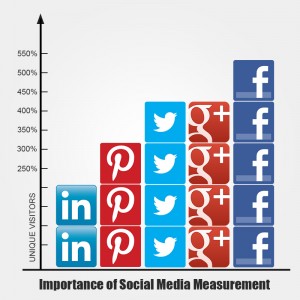
Social media allows companies to expand the scope of customer support, offering brands and consumers an opportunity to connect and engage in a way that was not possible in the past. Although this is a wonderful opportunity, it is important to not only set up and maintain these pages, but to monitor their performance as well.
Why? It's been said that "what gets measured is what gets done." Tracking your performance is the only way to know what works, what doesn't and how to improve. A more specific and robust set of measurements can help you accurately evaluate whether your efforts are achieving the business results you want. In the long term, this will guide you to make better and more informed decisions.
So, how do you know if you're tracking the right aspects of your performance? Measuring the effectiveness of your efforts doesn't have to be complicated. The following metrics are the ones that actually drive your social success.
1. Comments, Shares, Mentions and Retweets
Depending on which channel you are using, these are the measurements that reflect User Engagement. How long do your users spend on your page? How deep is their interaction? The entire purpose of social media is to engage customers and potential customers. You can obtain these measurements directly from the particular channel. Or, if you are using third-party applications such as Hootsuite or Tweetdeck, you can track your data within the app.
2. Community Size
How many people are interested in your brand? This is one of the most frequently used measurements. Don't blow this out of proportion. It may not matter how many fans you have if none become customers. (See #4)
3. Community Growth
If your efforts are successful, you should see a growth in your fans, followers and subscribers. Another benefit to tracking this particular data point is that you will be able to see whether certain actions cause you to lose or gain followers.
4. Conversions/Sales
This may be the most important metric of all. How are your efforts affecting your bottom line? Measuring conversions is simply tracking how many of your followers take the desired action, whether that's providing an email address or buying a product.
5. Sentiment
Sentiment is basically whether people are making positive, negative or indifferent comments about your company. There are a number of tools that can track this, but make certain they measure sentiment for each individual message. This makes reputation management simple since you can address negative comments.
6. Most popular pages, posts and tweets
Tracking these statistics will tell you what your audience likes so you can do more of it. Being social is a two-way conversation, so pay attention to what exactly interests your audience.
7. Page views and click-throughs
Which pages and links get the best response? Your CMS and analytical tools should provide data on who's clicking what.
8. Referring Sites
Where does your audience come from? If you notice that 90 percent of your leads are coming from LinkedIn and 5 percent from Twitter, you can adjust your strategy and do more of what's working and less of what's not. It's important to track this data point so you can effectively allocate resources.
9. Traffic
Are your efforts resulting in increased traffic? How do you know? Google and other companies provide strong web analytics tools that you can use. There are free and paid versions available depending on your needs.
10. Quality of fans/followers
How many members of your audience are in your company's target social demographic? It's not enough to have followers; make certain they are the people that your company is actually trying to reach.
Take some time to decide how and why your organization wants to be active on social media. Then, decide which metrics matter to your brand and measure and monitor your online activity. Use web analytics and the tools mentioned earlier for measuring Twitter and Facebook. Develop a media measurement report and adjust your resources based on your findings. This is how to develop a comprehensive strategy to monitor and measure your results.







